Augmented Reality’s value to an organizational setup can only be realized by connecting it to the real enterprise ecosystem.
Augmented Reality or AR involves overlaying digital information from integrated enterprise systems over the users’ environment in real-time, usually through photographic or map overlays.
At this stage in the AR maturity model, the company would have successfully transitioned from the Explore stage to the Deploy Stage, and the following should have been achieved:
- Your R&D and engineering teams would’ve already evaluated AR concerning various use cases.
- Measurement of the initial ROI banked in initial deployments.
- Application of change management lessons are gained in AR exploration work and formalized change management processes.
- Engagement of the content teams, hardware, and software engineering teams to work on your top use cases.
- IT team(s) have been aligned to a well-articulated AR enterprise strategy and familiar with Augmented Reality for Enterprise Alliance for enterprise systems integration (PLM, ERP, WMS, LMS, 3D, and AR Content Development).
- Budget approvals for AR hardware and software resources that have been rolled out proactively.
The Connecting stage lays the ground for the leading stage that helps capitalize on AR’s ability to deliver improved business outcomes in the enterprise reality ecosystem.
In this stage, many essential ingredients for AR enterprise success are already in place and additional tools for implementing the AR business value chain.
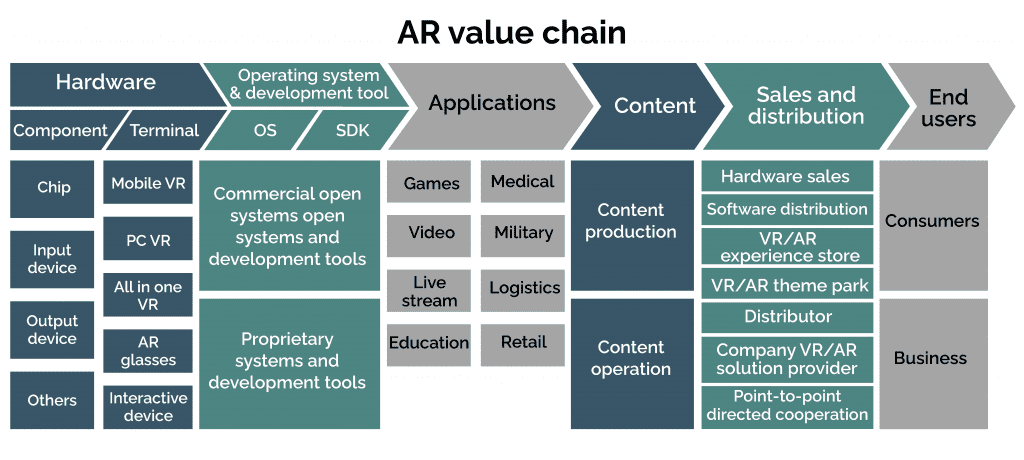
According to a Cognizant survey, nearly 60% of respondents (enterprises that have recently adopted AR) believed that AR is a mature technology that will be accepted, established, and widely used in 18 months to three years of implementation. The others thought it would happen in three to five years.
Of 300 respondents, one-third (a total of 106) have already implemented an AR initiative at an enterprise scale, which meant they are at stage three of the AR maturity model. Of that group, 80% (a total of 85) have implemented AR and expect to be ahead, or far ahead, of their competitors in three years. This meant these respondents are in the leading stage.
The three key elements that will make AR the focal point of integration and connection include:
Content
The information revolution has led to the inundation of digital data. The spectrum of data that may be suitable for AR-assisted viewing spans small databases of enterprise assets or resources to massive, continually expanding information repositories, often referred to as “Big Data.” A sophisticated analysis of Big Data would help extract benefits to AREA.
Enterprise information systems use digital information assets with metadata that associate them with real-world people, businesses, places, or objects.
Stage three involves learning about different content influencing AR and streamlining disparate types, including 3D and codified AR content.
Hardware
Producing an AR experience requires capturing the user’s context, performing transformations, associating triggers in a database with user contexts, and generating signals and patterns that present digital data, also known as “augmentations,” to the user’s senses.
The user context is captured by (hardware) sensors integrated into many enterprise objects, including local device processors or network-connected servers.
In the connecting stage, the hardware that produces signals detected by the user’s auditory, tactile or visual senses, tactile senses, and light waves are integrated with the core AR enterprise system.
These devices may include mass-market, consumer-grade smartphones or tablets, and smart glasses that may be consumer-based, enterprise-grade, or custom-built hardware.
Software
Software is used at different levels of sophistication during the design and publishing of experiences. It is also used for different ways of presentation during an AR experience.
During the connecting stage, delivering AR experiences is performed by systems controlled by software across internal and external enterprise networks. The functions of the software in AR include:
- Detect patterns in sensor observations.
- Interpret user context.
- Track user changes concerning the target and various triggers.
- Produce hardware-generated sounds, tactile signals, or visible augmentations.
- Capture and log interactions with physical and digital assets.
- Generation of timestamps from readings captured by sensors and stored for multiple secondary applications.
Aspects to Consider for the Connecting Stage
Activities
- Invitation and management of executive sponsorship.
- AR strategy alignment that is relevant to each use case to the enterprise IT ecosystem.
- The AR Steering committee’s formation involves taking expert-level individuals onboard to provide advice, ensuring delivery of the project outputs, and achieving project outcomes.
The essential tasks include:
- Provide input to the integration and connection of AR to enterprise systems, including the evaluation strategy.
- Budgeting advice.
- Defining and helping to achieve the project milestones and outcomes.
- Identify project priorities, potential risks, and timelines.
- Consider ideas and issues raised and guide the project engineering and testing teams.
- Help balance conflicting priorities and resources.
- Foster positive communication outside of the Committee regarding the project’s development.
- Quality monitoring of the project as it evolves.
- Providing advice and making decisions about (technical and business) changes to the evolving project.
- Coordinate the deployment of multiple connected and unconnected use cases.
- Organization-wide communication of a universal enterprise AR operating structure.
- Systematic evaluation of AR business value and the investment-revenues relationship.
Here is a sector-wise AR revenue outline from 2017-2022 from Digi-Capital.
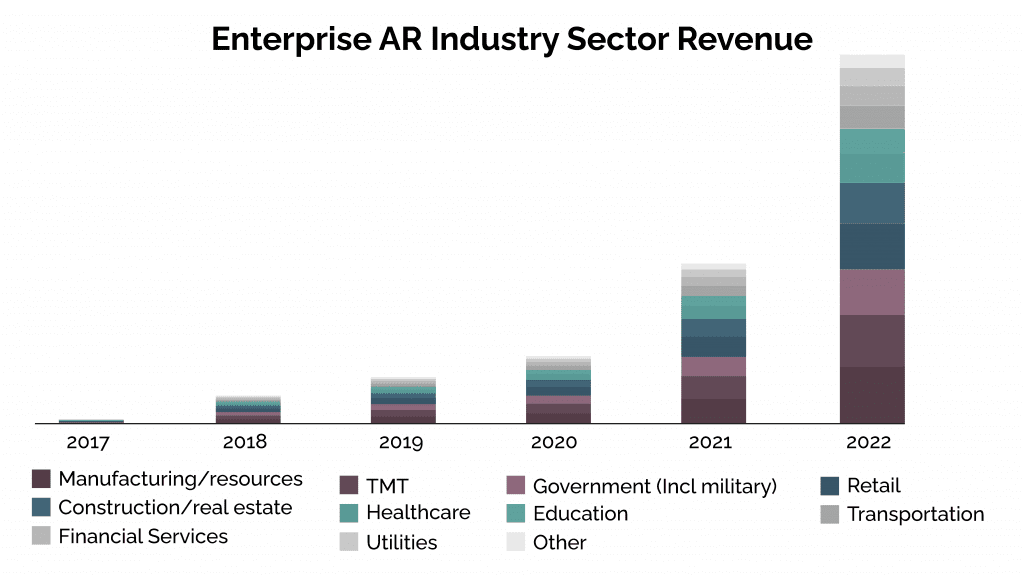
Strategies
- Assess, plan, modify, and implement AR deployment strategies by looping in the steering committee.
- Implement the principles of ITIL and other fundamental change management principles, put other processes and mandates in place, and make the workforce familiar with the formal change management process. Also, get change management experts onboard.
Technology
- The AR tech stack is industry-specific or industrialized.
- AR Platform integration processes using tools and frameworks with enterprise systems.
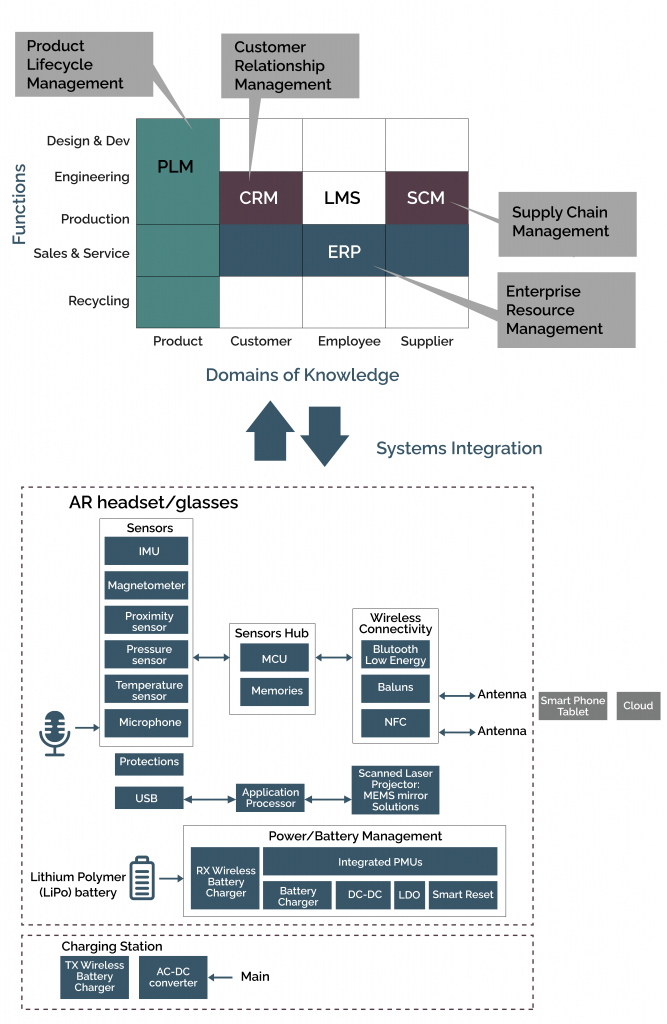 IIoT display of data within the AR system is enabled after analyzing the rewards and risks.
IIoT display of data within the AR system is enabled after analyzing the rewards and risks.
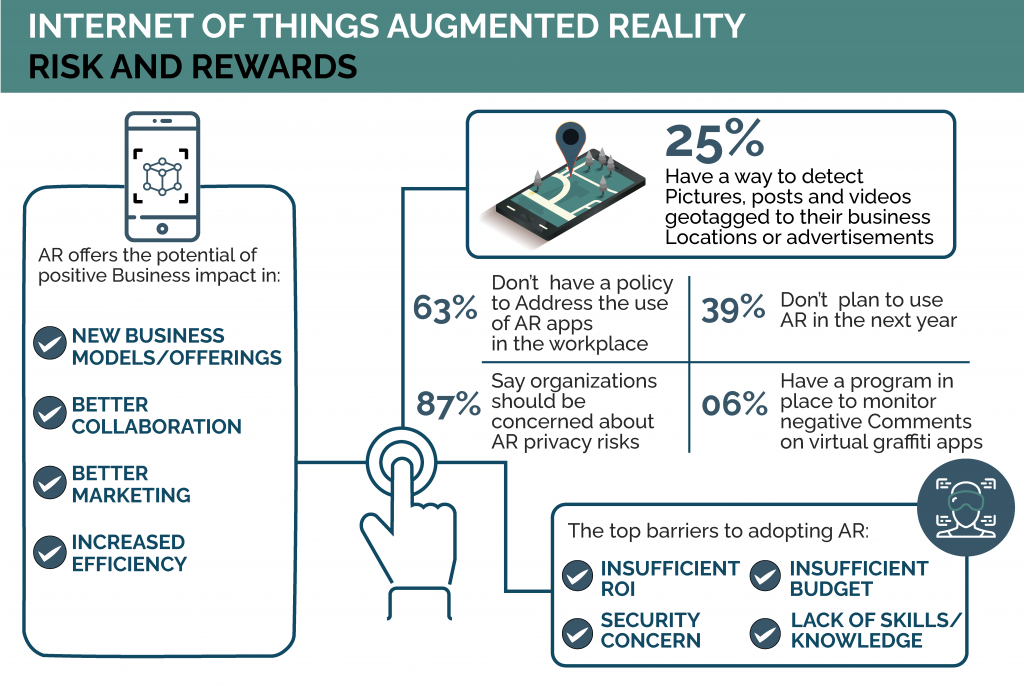 Product data and log information/history flow both ways.
Product data and log information/history flow both ways.
- End-to-end product integration and performance testing.
- Move IIoT into production and integrate it into ARMP.
The following image shows the level of AR implementation with IIoT today.
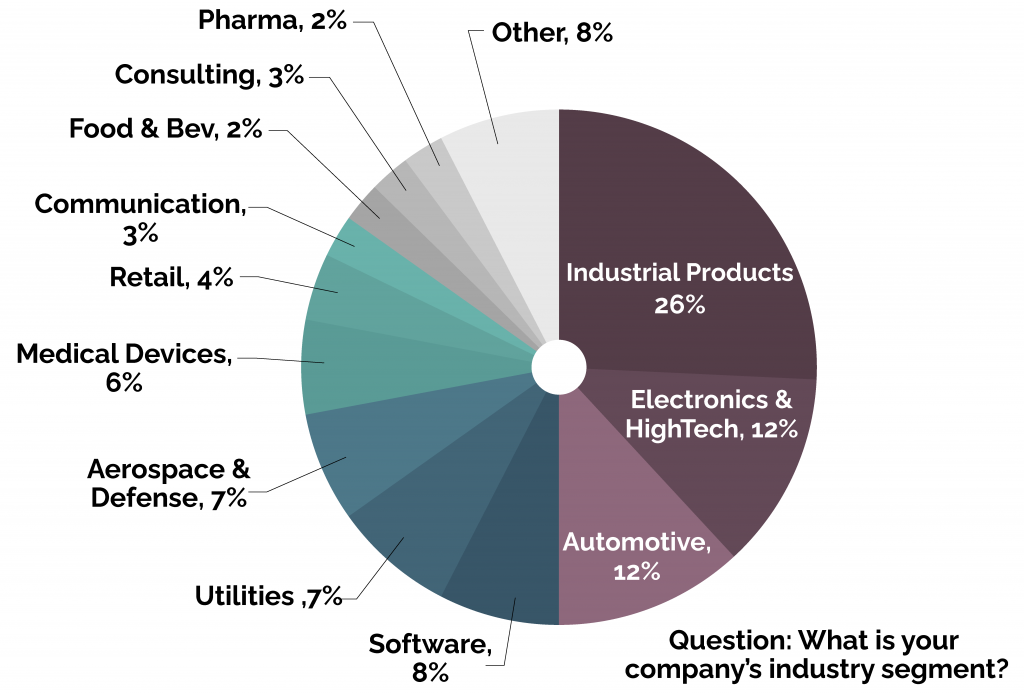 Content Management
Content Management
The emergence of AR content management systems has created innovative ways of interaction that combine real-world environments with computer-generated virtual objects. AR content can manage and create AR advertising campaigns, authoring, better user experiences, research, or enhancing employees’ technical understanding to perform better in their AR tasks.
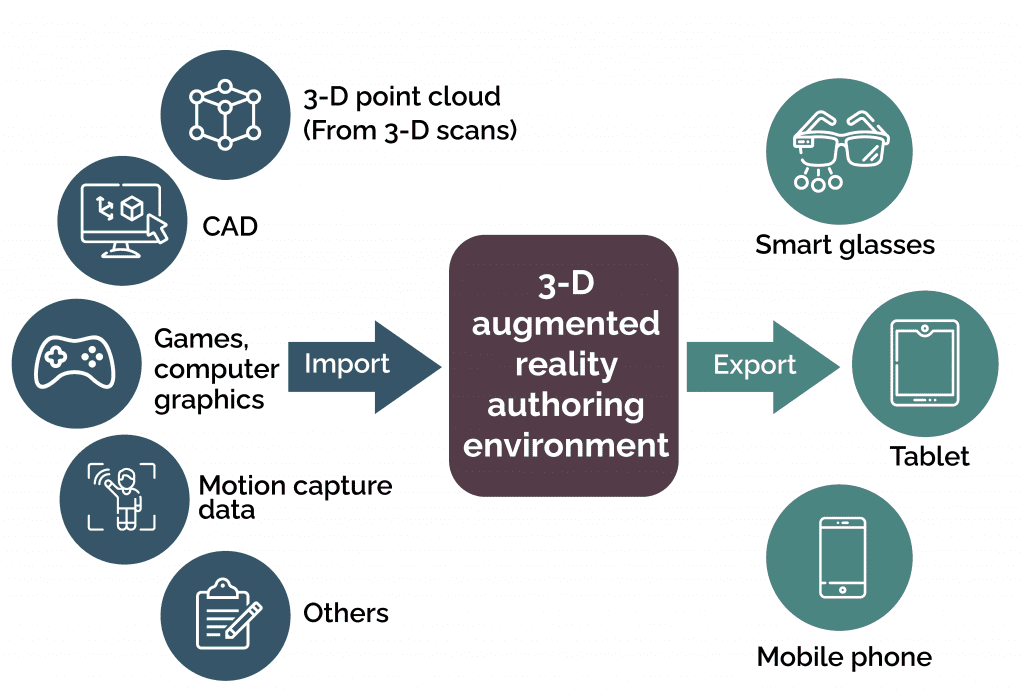 In this activity,
In this activity,
- Enterprise AR content is strategized based on imported, utilized, and exported using the general AR Architecture (shown below).
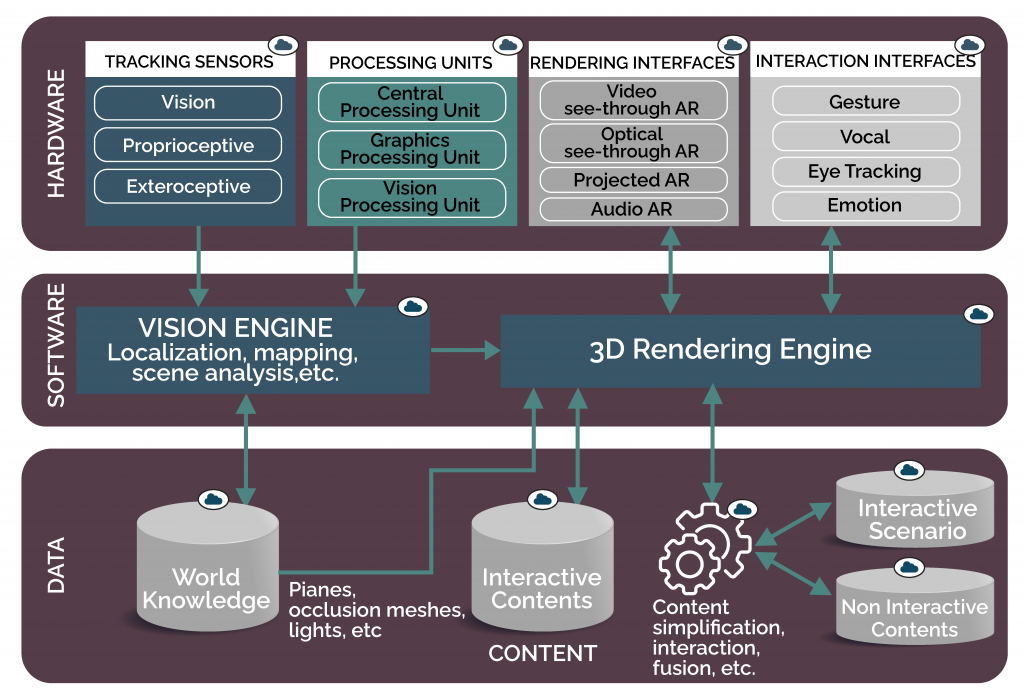 The coding of content for 3D and other AR functionalities is done.
The coding of content for 3D and other AR functionalities is done.- Third-party and OEM experts are connected with content enhancements.
- Learning content (LMS) is integrated into the core system for employees and interested parties.
Budgeting
This activity includes micromanaging the budget for software, hardware, workforce, and other AR enterprise integration requirements from multiple departments.
The steering committee is involved with the core management in making critical financial decisions based on intelligence-based reports and inputs from the IT teams.
IT Involvement
- This involves advanced monitoring and integration support.
- Dedicated Staff is allocated to the AR enterprise initiatives.
The benefits of the Connecting stage in the AR Maturity model, as suggested by Cognizant.
 Radiant has extensive experience integrating AR with diverse enterprise systems to make it a genuine game-changer for business. Contact us to learn more.
Radiant has extensive experience integrating AR with diverse enterprise systems to make it a genuine game-changer for business. Contact us to learn more.

